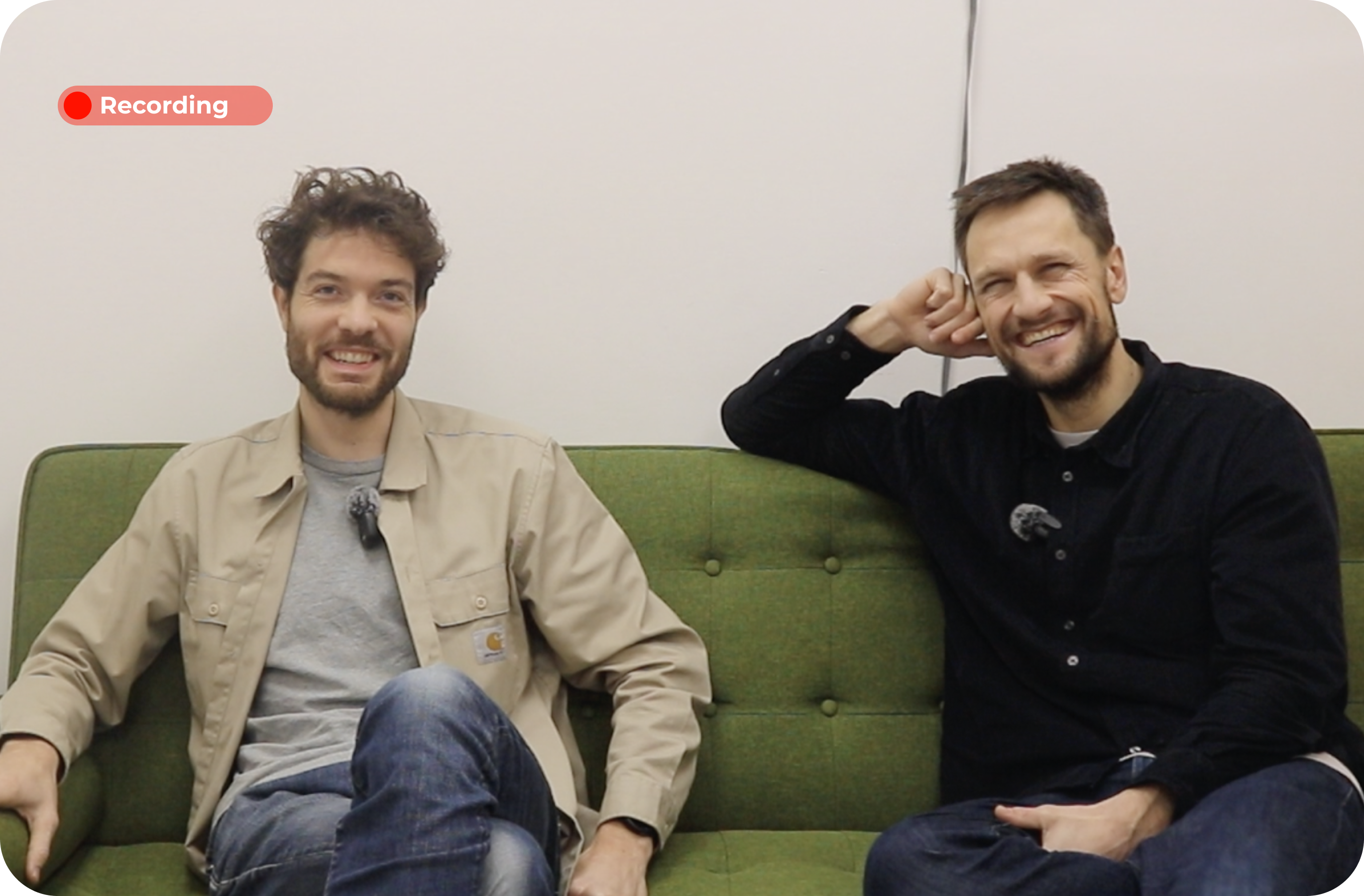Retour au bureau : Offrir une expérience employé optimale en 3 étapes

Découvrez notre solution tout-en-un
L’équipe de Rzilient est ravie de vous avoir proposé récemment un webinar, co-organisé avec Osol, dédié à l’expérience employé et son optimisation.
Pour celles et ceux qui n’ont pas pu nous rejoindre, nous vous proposons ici un récapitulatif des points-clés abordés, ainsi que la possibilité de visionner le replay.
Découvrez nos intervenants :
- Maxime Cousin, CEO de Osol (dont la mission est de permettre de travailler de partout, même au bureau !) et également consultant Future Of Work dans un cabinet appelé Topic ;
- Alban Frémont de Reboul, responsable commercial de Rzilient ;
- et Audrey Pogu, responsable marketing de Rzilient.
Le webinar s’est ouvert sur un retour sur les impacts de la pandémie du Covid-19, qui a fortement bousculé et interrogé l’organisation de nombreuses entreprises.
Ce qui ressort de ce point de bascule ? Une prise en compte beaucoup plus forte de l’expérience employé par les entreprises.
Et pour illustrer l’importance prise par le travail en remote, voici une statistique : 82 % des travailleurs se sentent plus productifs lorsqu'ils travaillent à distance en 2023, selon Owl Labs. L’enjeu est donc de taille pour libérer le potentiel de croissance de nos entreprises !

Voici une présentation des 3 étapes présentées dans le webinar, pour mener à bien une optimisation de votre expérience employé.
Étape 1 : faire un état des lieux et choisir le modèle adapté
Un petit rappel des principaux avantages du travail en remote, pour commencer. Il offre à vos salariés :
- la capacité d’organiser leur journée différemment, en fonction de leurs capacités de concentration ou de créativité ;
- un gain de temps important, grâce à l’absence de transports travail/domicile ;
- la possibilité d’avoir beaucoup moins de distractions et donc la capacité de pouvoir se concentrer plus efficacement.
4 modèles principaux existent en ce qui concerne le travail en entreprise :
- le “Full office” : les salariés viennent au bureau à temps plein ;
- l’hybride encadré : les salariés alternent entre bureau et télétravail, de manière encadrée ;
- l’hybride libre : le télétravail est utilisé de manière libre par les salariés ;
- le “Full remote” : les équipes travaillent à temps plein en remote.
Maxime évoque aussi un point important : la nécessité de se poser la question des activités qui doivent être réalisées en présentiel (telles que les formations et les moments en équipe) et celles qui peuvent se faire en distanciel sans difficulté (traitements des emails, appels, réunions d’information, etc.).
Voici à présent les actions principales à mener pour choisir le meilleur modèle d’organisation du travail, c’est-à-dire le plus adapté à votre entreprise et à vos salariés.
Consulter vos salariés, pour obtenir leur feedback
Rien de tel que de poser la question aux premiers intéressés : vos salariés !
Prendre en compte la neurodiversité est également intéressant. Concrètement, chaque salarié possède sa personnalité et sa psychologie propres.
À titre d’exemples :
- certaines personnes sont introverties et préféreront travailler seules, chez elles ;
- d’autres sont extraverties, ou très sociales, et ont un besoin viscéral d’être au contact d’autres personnes ;
- certains salariés sont très autonomes et d’autres travaillent mieux avec un niveau d’interaction et de suivi plus régulier.
Prendre en compte cette diversité est un facteur déterminant dans l’optimisation de l’expérience employé !
Prendre en compte votre culture d’entreprise

La culture d’entreprise joue également un rôle important. Les intervenants évoquent deux cas concrets.
Chez Hermès, par exemple, il est inconcevable pour les équipes de travailler en remote, car l’histoire de l’entreprise est très liée à l’équité entre les salariés. Or, les “petites mains” travaillant nécessairement en full office, le reste de l’équipe fait le choix de rester sur ce modèle, par solidarité.
L’assureur en ligne Alan, au contraire, filtre ses candidats à l’entrée, selon leur acceptation de travailler en télétravail uniquement !
Étudier l’impact sur l’activité de votre entreprise
Toutes les entreprises ne sont pas en mesure de passer en full remote. C’est le cas par exemple du retail (distribution) ou lorsque la production est physique.
S’adapter au cadre légal
Vous devez aussi prendre en compte la législation et - si besoin - adapter les contrats de travail, procédures et conditions de travail de vos salariés.
Consulter votre pôle financier
Travailler en remote représente :
- des dépenses (suivi renforcé nécessaire, primes de télétravail, etc.) ;
- des économies (optimisation des espaces de travail, moindres dépenses en informatique, grâce au BYOD, etc.).
Votre direction financière pourra vous éclairer sur les impacts financiers de la décision de passer au télétravail.
Étape 2 : adapter votre entreprise
Les intervenants proposent ensuite une série de bonnes pratiques sur l’adaptation de votre entreprise au travail en remote.

Les bureaux
Pour Maxime, le bureau a encore aujourd’hui un sens. Il est important d’y :
- définir des espaces de travail dédiés à des activités précises ;
- offrir une pluralité d’espaces ;
- travailler le mobilier et le design afin de stimuler la créativité et le bien-être ;
- jouer sur un continuum du collaboratif, par exemple en faisant le choix de ne pas proposer de postes de travail fixes.
L’environnement technologique
Rzilient est expérimentée dans l’accompagnement d’entreprises qui travaillent en full remote.
Alban se base sur son expérience pour proposer de nombreuses bonnes pratiques à adopter :
- optimiser votre flotte informatique, en choisissant les bons outils et en assurant une intégration forte des services IT ;
- offrir à vos équipes un bureau virtuel, tel qu’un métavers en 2D, ce qui permet d’améliorer la qualité des conversations (en comparaison à des outils tels que Slack ou l’email) ;
- penser aux détails, tel que de proposer du mobilier de bureau facilitant l’installation du matériel informatique ;
- proposer des fonctionnalités utiles, telles que de pouvoir verrouiller son ordinateur ou d’effacer ses données à distance ;
- et enfin, offrir un service de support IT de qualité, via tous les canaux de communication pertinents (Slack, email, téléphone, Teams, chat…), dans l’objectif qu’aucun collaborateur ne perde du temps à cause d’un bug ou d’une difficulté logicielle !
La culture d’entreprise
Audrey propose ensuite des solutions pour développer une culture d’entreprise plus adaptée et propice à la stimulation intellectuelle.
Ces solutions doivent s’adapter aux modes de travail proposés :
- hybride ou à distance ;
- selon la pluralité des espaces, etc.
En réalité, c’est dès l’embauche que l’expérience employé doit être alignée avec la culture d’entreprise, surtout dans un contexte de télétravail. Il est beaucoup plus complexe d’instiller une culture d’entreprise dans des activités qui sont menées principalement à distance, et il est donc vital de prévoir des temps d’échange et de team building pour compenser cela.
Étape 3 : accompagner et améliorer en continu
Un fonctionnement en remote implique d’accompagner vos salariés à cette pratique.
Il faut régulièrement optimiser les usages, via ces actions :
- mettre en place et communiquer sur les bonnes pratiques. Ceci peut passer par la rédaction d’un playbook, la mise en place d’onboardings soigneusement préparés, la sensibilisation sur les règles à respecter, etc.
- former et accompagner les collaborateurs, via une communication sur les nouveaux services proposés, des sessions de formation et un support technique optimisé ;
- améliorer le fonctionnement de l’entreprise, grâce à l’engagement des collaborateurs : enquêtes de satisfaction, sessions de brainstorming, échanges individuels, etc.
Les intervenants insistent sur le rôle central du playbook. Ce document de référence est l’arbitre lorsqu’une question ou un doute apparaît sur les processus ou l’organisation de l’entreprise. Son avantage clé ? Il offre un cadre de travail transparent et facilite l’alignement des équipes.
Il est enfin vital de se rappeler qu’à distance, il n’est pas toujours possible d’avoir une vision exacte du contexte de travail des équipes. Pour aligner tout le monde sur la mission de votre entreprise, il est nécessaire de bien travailler la formation des équipes et les revues de performance individuelle.







